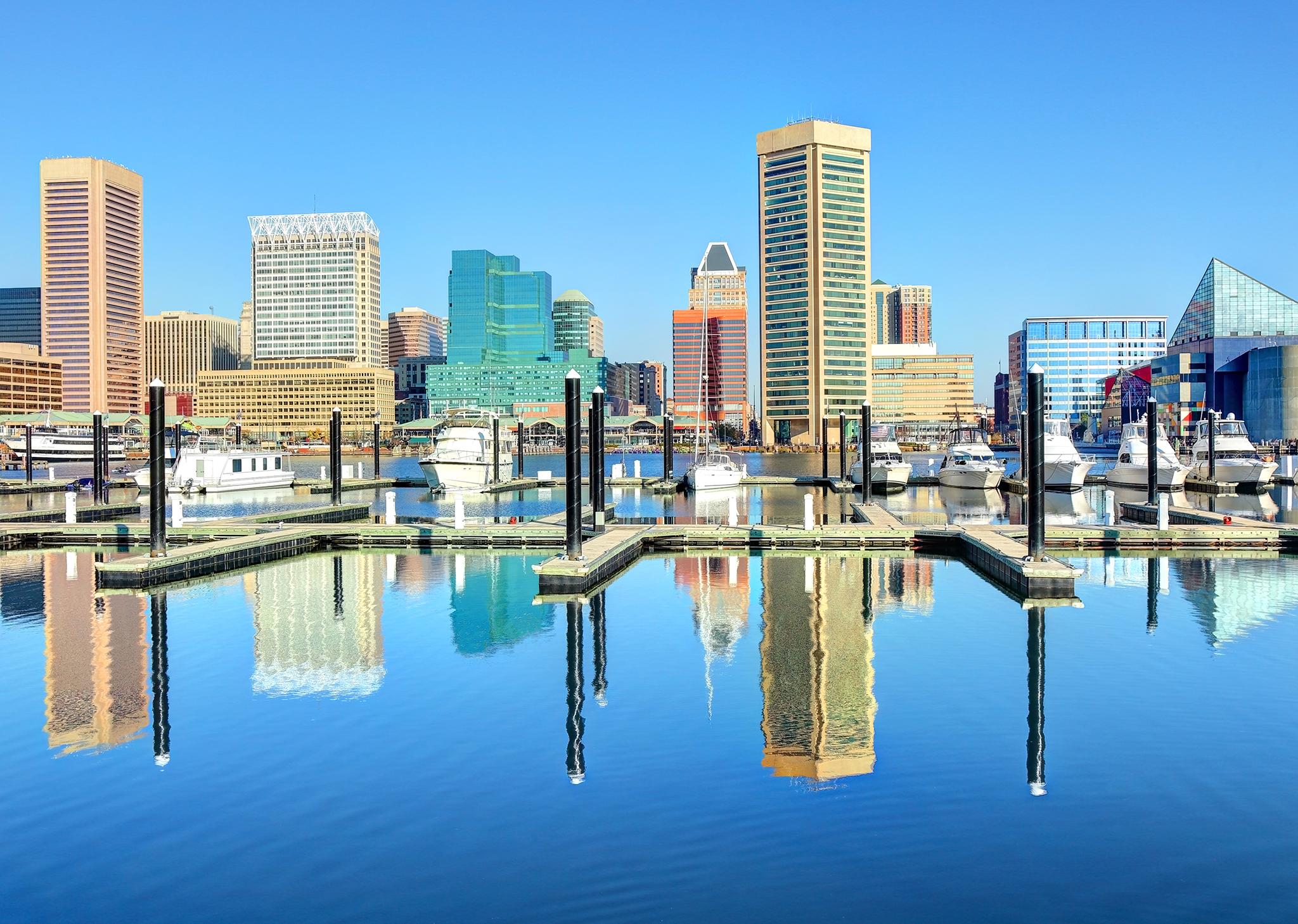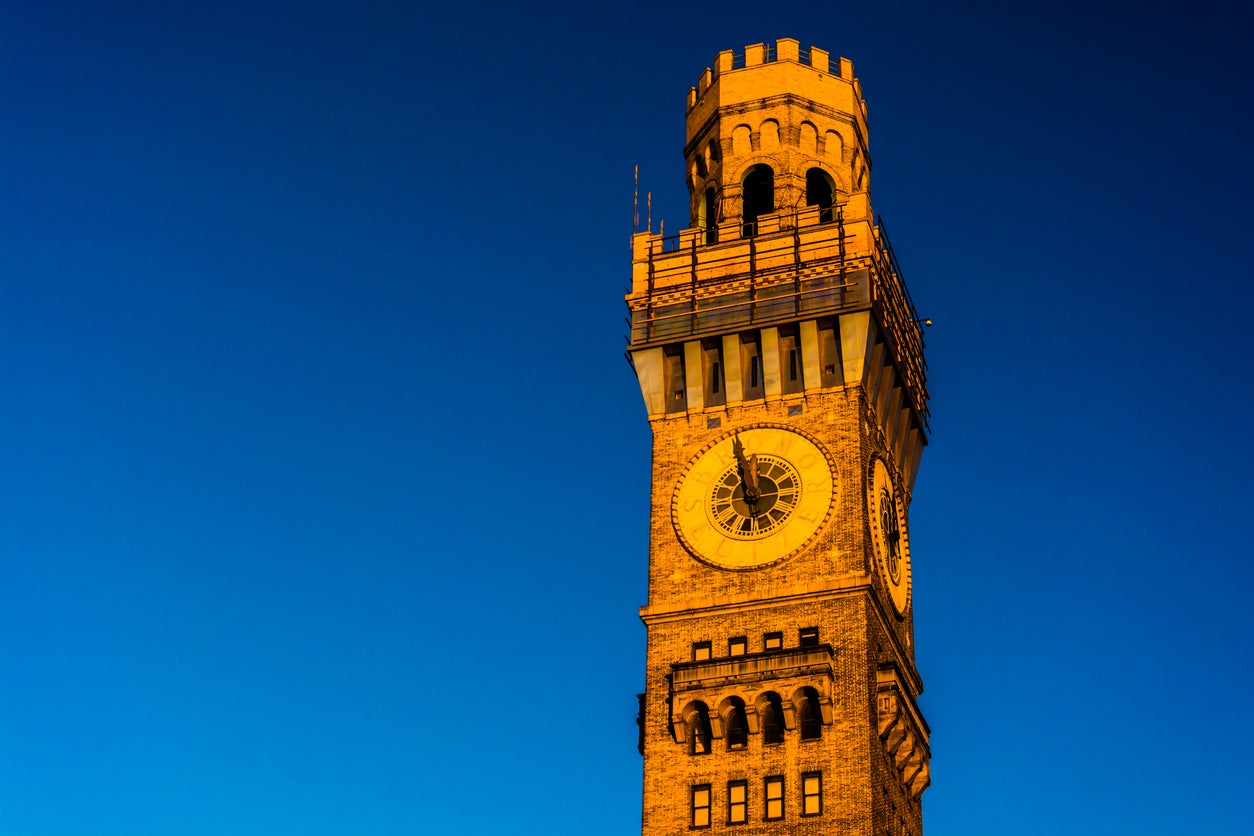A love letter to Baltimore, the most underrated city on America’s east coast
Crabcakes, industrial foodcourts and laid-back harbourfront living – there’s a reason Baltimore’s star is on the rise, says Eleanor Ross


Your support helps us to tell the story
From reproductive rights to climate change to Big Tech, The Independent is on the ground when the story is developing. Whether it's investigating the financials of Elon Musk's pro-Trump PAC or producing our latest documentary, 'The A Word', which shines a light on the American women fighting for reproductive rights, we know how important it is to parse out the facts from the messaging.
At such a critical moment in US history, we need reporters on the ground. Your donation allows us to keep sending journalists to speak to both sides of the story.
The Independent is trusted by Americans across the entire political spectrum. And unlike many other quality news outlets, we choose not to lock Americans out of our reporting and analysis with paywalls. We believe quality journalism should be available to everyone, paid for by those who can afford it.
Your support makes all the difference.The Independent’s hotel recommendations are unbiased, independent advice you can trust. On some occasions, we earn revenue if you click the links and book, but we never allow this to affect our coverage.
The Wire was a long time ago now, and Baltimore, which sits on Patapsco river in Maryland, shines like a newly minted jewel.
Arriving on a Friday evening, the city hums with excitement. For a moment it feels like everyone is out jogging or walking their dog, easing their way into the weekend. The harbourfront, Fell’s Point, is older than the city itself, and it’s a great base for exploring Baltimore. The Sagamore Pendry hotel dominates the waterfront, with its striking swimming pool that stretches out into the river so it feels like you’re floating in nature. Warm lights strung across the cobbled streets are reflected in the water, and couples canoodle on benches, enjoying one of the last humid evenings before autumn turns.
As the east coast’s living costs skyrocket, there’s been an artistic exodus to Baltimore from nearby New York and Washington DC in recent years. Alternative communities are moving in, with stylish coffee shops and hipster food courts springing up to cater for them.
As a former industrial city, one thing Baltimore isn’t short of is former warehouses and mills, and some of the most exciting dining experiences are housed in repurposed buildings. Gunther and Co in Brewer’s Hill is one such space, its cavernous ceiling creating an indomitable sense of occasion. The dining room is packed with working lunches, family celebrations and intimate anniversaries. Go on a Sunday, and the kitchen allows the chefs to veer off from the everyday menu with its Sunday supper offerings – “a chance for them to be really inventive”, the restaurant manager tells me. A plate of end-of-season ripe figs is served as the perfect starter alongside a generous chunk of Old Yeller cow’s milk cheese from one of Maryland’s own dairies. Roasted olives are brought to snack on.
R House near Johns Hopkins University campus is another repurposed building. Formerly a garage, it’s now home to a 6,500sq-ft food hall packed with punters sampling Amano Tacos or smoky Korean barbecue from Be.Bim. I happily take a seat, revelling in the air con and the chance to rest my weary feet after wandering from neighbourhood to neighbourhood.
This is the other thing nobody tells you about Baltimore. It’s one of those charmed American cities where you don’t need to drive as a visitor. Sure, you might need to take a water taxi now and again to speed you across the river, but key neighbourhoods are close enough to amble between.

Walking also helps burn off the many, many crabcakes. Baltimore’s speciality is the blue crab, and it’s a time-honoured tradition for local Baltimoreans. Although every restaurant in the city says they have the best crabcake, LP Steamers is a laidback Baltimore staple where locals go to get their fix. Seafood – shrimp, mussels and clams – come piled high, but the fried crab cakes with a side of onion rings are the star dish.
As well as gastronomy, artists’ studios have spawned excellent galleries. One of the most interesting spaces is the American Visionary Art Museum, the only gallery in the country for self-taught artists. The space focuses on “outsider art”, which challenges the traditional narrative. Founder Rebecca Hoffberger launched the gallery with the intention of running exhibitions that revolve around a “grand-spirited theme that has inspired human beings from the get-go”.

The museum’s most recent exhibition embraces the zeitgeist – The Secret Life of Earth: Alive! Awake! (And Possibly Really Angry!). An Icarus sculpture falls from the ceiling down the stairwell while Johanna Burke’s Small Monkeys, made from fibreglass and plants, is a striking example of how natural items can be employed to make visionary art.
Baltimore’s Museum of Art, tucked away by Johns Hopkins University, is worth visiting, and has a surprising claim to fame – it has the largest number of Matisses (more than 1,000) of anywhere in the world. I spend a happy morning drifting around Generations: A History of Black Abstract Art, which runs until January 2020 and celebrates the contribution black artists have made to postwar art. Brunch at gallery-restaurant Gertrude’s is a post-visit must, too. John Shields’ Chesapeake restaurant serves up excellent regional cuisine, including some of the best home-fried potatoes I’ve ever eat. Veggie? It’s rumoured the kitchen will rustle up a mean vegan crab cake if you ask nicely.
Back in town, you’d be forgiven for wondering why there’s an enormous Venetian tower peering out over the rooftops. But take an hour-long tour with Baltimore local Betsy Stone, whose pure passion for the city and its odd historic characters keeps me gripped, and you’ll soon find out.
As we sit on the 15th floor of the tower, Betsy tells us about Isaac Emerson, the Baltimore legend who invented a cure for headaches in 1888. He called it Bromo-Seltzer, and employed a staff of thousands. Not content with building an enormous tower, he added a 50ft blue bottle decorated with 596 blinking lights to represent the effervescent powder inside the Bromo-Seltzer solution.

To me, the tower sums Baltimore up. It’s a city that perseveres and manages to surprise visitors at every turn. Yes, it has its more down-at-heel districts, like any city – but this is a destination that’s on the up. The future’s as bright as those 596 blinking lights.
Travel essentials
Getting there
British Airways flies directly to Baltimore from London Heathrow from £400 per person.
Staying there
Rates at the Sagamore Pendry start from $300 per night.
Join our commenting forum
Join thought-provoking conversations, follow other Independent readers and see their replies
Comments